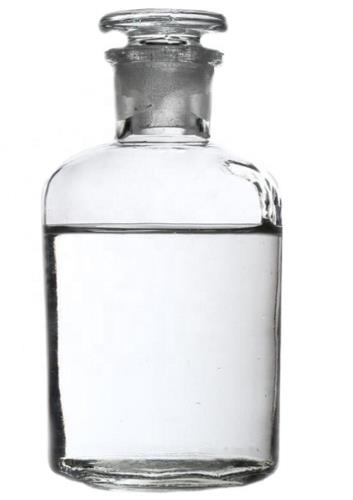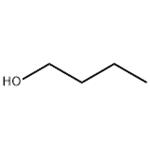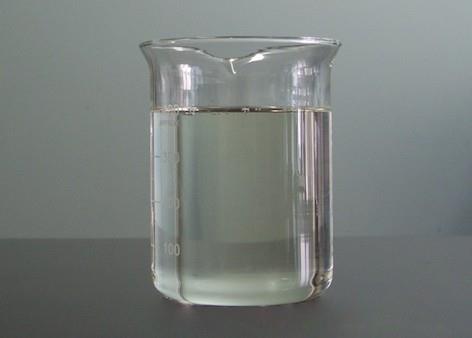1-Butanol: Applications and Toxicity
May 8,2023
General Description
1-Butanol is a primary alcohol with a 4-carbon structure. Butanol is one of the group of "fusel alcohols",which have more than two carbon atoms and have significant solubility in water. It occurs naturally as a minor product of the fermentation of sugars and other carbohydrates, and is present in many foods and beverages. It is also used in a wide range of consumer products. The largest use of 1-butanol is as an industrial intermediate, particularly for the manufacture of butyl acetate. It is a petrochemical, manufactured from propylene and usually used close to the point of manufacture. Other industrial uses include the manufacture of pharmaceuticals, polymers, pyroxylin plastics, herbicide esters and butyl xanthate. It is also used as a diluent/reactant in the manufacture of urea-formaldehyde and melamine-formaldehyde resins. It is used as an ingredient in perfumes and as a solvent for the extraction of essential oils. It as been proposed as a substitute for diesel fuel and gasoline.1

Figure 1. Properties of 1-Butanol
Chemical properties of 1-Butanol
1-Butanol's chemical properties are shared with the same group of alcohols, with 1-Butanol being highly flammable, colourless and with a strong characteristic odour, very similar to Isopropyl Alcohol for domestic use. It has very broad melting and boiling points: 117°C to boil and -80°C to melt. This property of alcohols is beneficial for the production of certain chemicals that are required to cool an entire system. The toxicity of n-Butanol is higher than any of its counterparts, such as sec-Butanol, tert-Butanol or Isobutanol.2
Applications of 1-Butanol
1-Butanol has the same use as the rest of its chemical group. Alcohols work as an intermediary for chemical reactions in industry, being used as a solvent and dehydrating agent. An important use in industry is in the manufacture of paraffin, as well as other detergent-type products and chemical reagents. Its industrial use includes:
1. Solvent for paints, natural resins or other products derived from oils.
2. Various intermediate reactions in the manufacture of pharmaceuticals and other chemicals.
3. As an intermediate product used to obtain other chemical compounds.
4. The manufacture of herbicides and other essential agrochemicals for agriculture.
5. Humectant for cellulose nitrate
6. Used in the cosmetic industry as well in products such as shampoo, shaving products and soaps.
7. As a chemical intermediate to create other vital compounds such as Glycol Ether, Acrylate Esters, Amino Resins, Acetates, and Animes.3
Toxicokinetics
1-Butanol is readily absorbed following oral administration in rats, moderately absorbed following an inhalation exposure in rats and humans, and poorly absorbed following an in vitro dermal exposure. Once absorbed, 1-Butanol is rapidly distributed to many tissues, including the liver, kidney, lung, brain, and heart. 1-Butanol is rapidly metabolized to butyric aldehyde by alcohol dehydrogenase (ADH) and further to 1-butyric acid by aldehyde dehydrogenase. 1-Butanol is also oxidized by cytochrome P450 in rat liver. Further oxidation of 1-butyric acid produces CO2. A minor conjugation pathway exists resulting in 1-butanol-O-glucuronide or 1-butanol-O-sulfate, which are excreted in the urine. In addition to exogenous sources of 1-Butanol, this alcohol is readily and rapidly metabolized from 1-butyl acetate. Excretion of 1-Butanol is primarily as CO2 in exhaled breath with minor amounts eliminated in rat urine (2.6–5.1%) and feces (0.6–1.1%).4
Mechanism of Toxicity
The primary effects observed following oral and inhalation exposure in rats and mice to 1-Butanol include neurological and neurodevelopmental effects. 1-Butanol has been evaluated in a large number of experimental animal and in vitro studies examining possible mechanisms for alcoholinduced neurotoxicity. One proposed mechanism is that alcohols, in general, produce neurological changes by disrupting the lipid bilayer. A few experimental animal studies have shown that 1-Butanol, like other alcohols, can disrupt membrane integrity. Other in vitro and experimental animal studies have demonstrated that 1-Butanol interacts with protein-receptors and modulates their effects such that it potentiates inhibitory g-aminobutyric acid (GABA) and glycine receptors and inhibits excitatory neuronal receptors such a glutamate. This modulatory action of 1-Butanol is supportive of the observed neurobehavioral changes (e.g., central nervous system (CNS) depressant profile) associated with n-butyl alcohol exposure in humans.
In addition, experimental animal studies have shown that 1-Butanol inhibits fetal rat brain astroglial cell proliferation by disrupting the phospholipase D(PLD) signaling pathway. Inhibition of astroglial cell proliferation, which has been postulated as a mode of action for ethanol-induced microencephaly and mental retardation observed in cases of fetal alcohol syndrome. These mechanisms can also be relevant to the observed dilation in the brain that has been noted in animals gestationally exposed to 1-Butanol.4
Exposure and Exposure Monitoring
Routes and Pathways (Including Environmental Release)
1-Butanol is released into the environment through natural and human sources. Natural sources of 1-Butanol include dried beans (0–7 ppb), split peas (150 ppb), and lentils (120 ppb); it has been reported as a volatile component of pear and apple aromas, mountain cheese, roasted filberts, fried bacon, and grapes. Human sources of 1-Butanol release include uses as a solvent for manufacturing, extracting, and as a fuel oxygenate. Human Exposure Exposure to n-butyl alcohol can occur occupationally in a manufacturing facility or industry that uses 1-Butanol. Occupational exposure could be via inhalation or dermal contact. Potential for oral exposure is rare. General exposure can occur through inhalation of ambient air, environmental releases of 1-Butanol in soil or water, ingestion of foods naturally containing n-butyl alcohol, or usage of consumer products that contain this compound.
Environmental Exposure (Monitoring Data in Air, Water, Sediment, Soil, and Biota)
Most of the environmental exposure is expected to occur in air (99.75%). 1-Butanol has also been detected in surface water discharge, in underground injection, and through releases to land.5
References
1. https://www.worldofchemicals.com/chemicals/chemical-properties/1-butanol.html
2. https://baochemicals.com/what-is-n-butanol-uses-and-chemical-properties/
3. https://ecolink.com/info/what-is-n-butanol/
4. Bale, A. S., & Weaver, J. A. (2014). n-Butyl Alcohol.
5. ACGIH (American Conference of Governmental Industrial Hygienists), 2002. n-Butanol. In: Documentation of the Threshold Limit Values and Biological Exposure Indices.
- Related articles
- Related Qustion
- What is the Biosynthetic Pathway of 1-Butanol? Nov 27, 2024
1-Butanol (n-Butanol) is a widely used industrial reagent. 1-Butanol vapor can be used to preserve food and prolong its color.
- The polarity analysis of 1-Butanol Jan 3, 2024
1-Butanol is a vital chemical platform used as feedstock in the plastic industry, plasticizers, paints, binders, and food extractants.
- What is 1-Butanol? Apr 19, 2021
What is 1-Butanol?
Methyl methacrylate is an important monomer, which is widely used for producing acrylic plastics or producing polymer dispersions for paints and coatings.....
May 8,2023Organic Raw MaterialEthylenediaminetetraacetic acid was developed by Franz Munz in Germany during the 1930s as an alternative to citric acid. EDTA is used as a food additive, in herbicides, and pharmaceuticals.....
May 9,2023Organic Chemistry1-Butanol
71-36-3You may like
- 1-Butanol
-

- $10.00 / 1kg
- 2025-12-11
- CAS:71-36-3
- Min. Order: 1kg
- Purity: 99%
- Supply Ability: 100 mt
- 1-Butanol
-

- $0.00 / 200kg
- 2025-11-19
- CAS:71-36-3
- Min. Order: 20kg
- Purity: 99.0%
- Supply Ability: 20 tons
- 1- Butanol
-

- $0.00 / 200kg
- 2025-11-19
- CAS:71-36-3
- Min. Order: 20kg
- Purity: 99.0%
- Supply Ability: 20 tons






